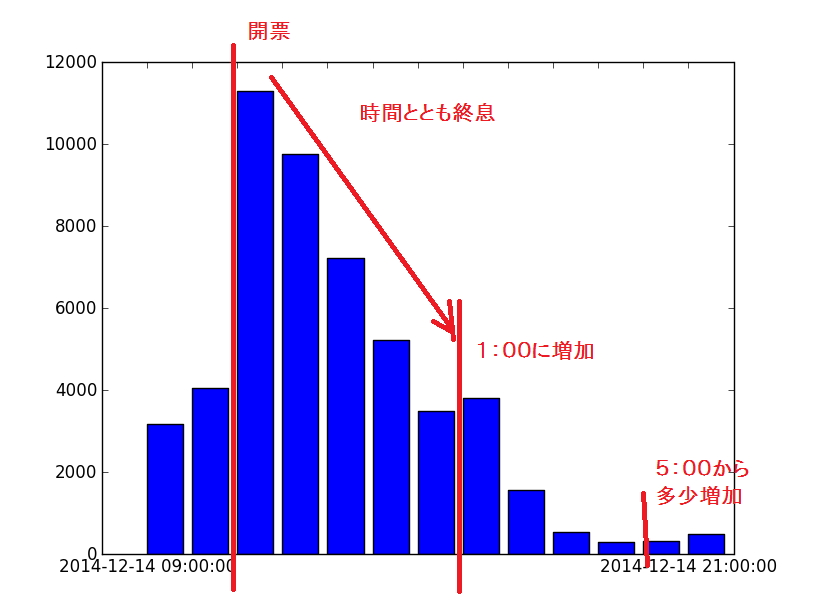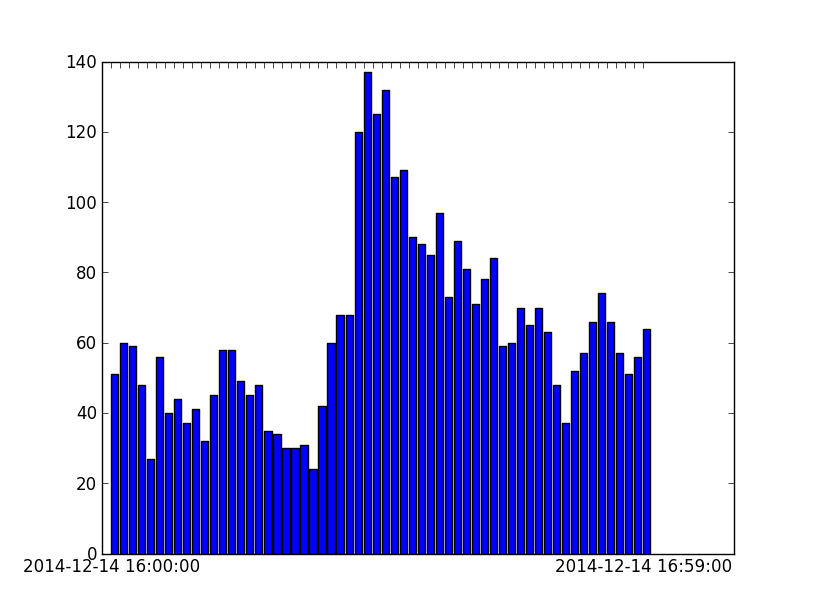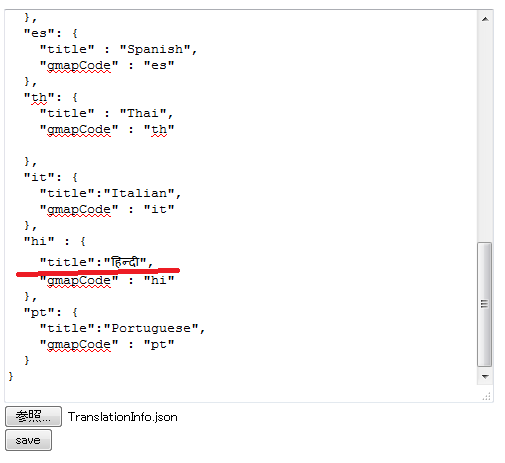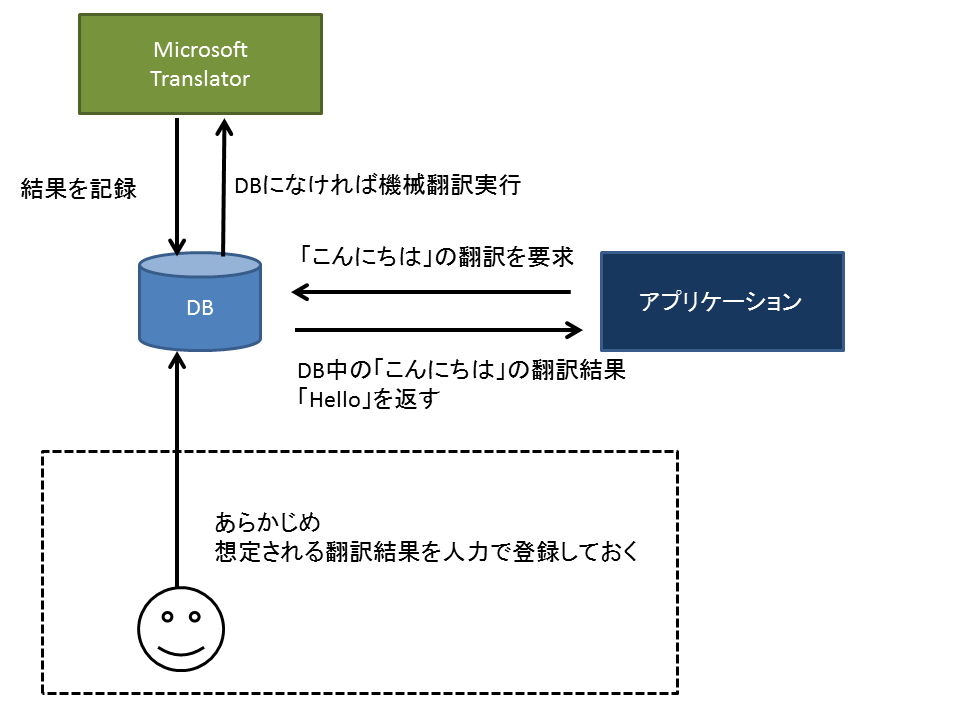背景
SQLiteをPythonから使用する場合、Python2.5以上ではデフォルトでsqlite3が使用できます。
これは、DB-API 2.0 仕様に準拠した SQL インタフェースを提供するもので、pysqliteという名前で開発されています。
sqlite3
http://docs.python.jp/2/library/sqlite3.html
しかしながら、このライブラリはSQLiteの全ての機能を使えるわけではありません。これは、DB-APIの仕様に準拠するためです。
APSWは、SQLite APIをPythonで完全に使用できるようなライブラリになっています。APSWはPython2.xとPython3.xで動作します。
https://github.com/rogerbinns/apsw
http://rogerbinns.github.io/apsw/
インストール方法
pipやeasy_installではインストールが行えません。
2019.08.03 更新
現在は以下でもインストール可能です。
pip install --user https://github.com/rogerbinns/apsw/releases/download/3.28.0-r1/apsw-3.28.0-r1.zip --global-option=fetch --global-option=--version --global-option=3.28.0 --global-option=--all --global-option=build --global-option=--enable-all-extensions最新情報は下記を参照してください。
https://rogerbinns.github.io/apsw/download.html#easy-install-pip-pypi
Windowsの場合
以下から該当するバイナリをダウンロードしてインストーラーを実行します。
http://rogerbinns.github.io/apsw/download.html#source-and-binaries
VisualStudioを持っている場合、UNIXと同様にソースからのビルドが可能です。
(mingw32だと、ビルドはできても実行時にDLLが足りなくて動作しませんでした。)
Unixの場合
ソースコードをダウンロードして、下記のコマンドを実行してください。
python setup.py fetch --all build --enable-all-extensions installビルドについての詳細は下記のページに記述してあります。
http://rogerbinns.github.io/apsw/build.html
APSWとpysqliteの違い
APSWとpysqliteは根本的に異なる方向からSQLiteへのアクセス方法を提供します。
APSWはSQLiteのバージョン3のみをラップしており、全てのAPIにアクセスできる方法を提供します。
pysqliteはDBAPI準拠のラッパーを提供するために、他のデータベースと同じような振る舞いを行うようにします。そのため、いくつかのSQLiteの特徴を隠ぺいします。
以下に、APSWの利点や拡張された機能を紹介します。
最新のSQLiteの機能が使える
APSWはSQLiteの最新が使用できるようにしています。もし、SQLiteに機能の追加や変更が行われたらAPSWもそれらの機能を追いかけます。
Virtual Tableが使用可能である。
Virtual Table はSQLite 3.3.7から導入された機能です。
Virtual TableはSQL文の観点からは他のテーブルやビューと変わりありません。しかし、舞台裏ではVirtual Tableへのクエリや書き込みは、データベースファイルの読み書きの代わりにコールバックメソッドを引き起こします。
以下に、二次元配列のデータをSQLで操作する例を示します。
# -*- coding: utf-8 -*-
import os, sys, time
import apsw
connection=apsw.Connection(":memory:")
cursor=connection.cursor()
###
### Virtual tables
###
#
data = [
[1, 'test1', 'categoryA'],
[2, 'test2', 'categoryA'],
[3, 'test3', 'categoryA'],
[4, 'test4', 'categoryB'],
[5, 'test5', 'categoryB'],
[6, 'test6', 'categoryB'],
[7, 'test7', 'categoryB'],
[8, 'test8', 'categoryC'],
[9, 'test9', 'categoryC'],
[10, 'test10', 'categoryC']
]
counter = len(data)
# This gets registered with the Connection
class Source:
def Create(self, db, modulename, dbname, tablename, *args):
columns = ['rowid', 'name', 'category']
schema="create table foo("+','.join(["'%s'" % (x,) for x in columns[1:]])+")"
return schema,Table(columns,data)
Connect=Create
# Represents a table
class Table:
def __init__(self, columns, data):
self.columns=columns
self.data=data
def BestIndex(self, *args):
return None
def Open(self):
return Cursor(self)
def Disconnect(self):
pass
def UpdateChangeRow(self, row, newrowid, fields):
for d in data:
if(d[0] == row):
d[0] = newrowid
d[1] = fields[0]
d[2] = fields[1]
def UpdateDeleteRow(self, row):
for i in range(len(data)):
if(data[i][0] == row):
del data[i]
return
def UpdateInsertRow(self, rowid, fields):
global counter
counter = counter + 1
data.append([counter, fields[0], fields[1]])
return counter
Destroy=Disconnect
# Represents a cursor
class Cursor:
def __init__(self, table):
self.table=table
def Filter(self, *args):
self.pos=0
def Eof(self):
return self.pos>=len(self.table.data)
def Rowid(self):
return self.table.data[self.pos][0]
def Column(self, col):
return self.table.data[self.pos][1+col]
def Next(self):
self.pos+=1
def Close(self):
pass
connection.createmodule("source", Source())
cursor.execute("create virtual table test using source()")
ret = cursor.execute("select * from test where category = 'categoryB'")
for row in ret:
print row[0], row[1]
print ('update -----------------')
cursor.execute("update test set category='categoryB' where name='test1'")
ret = cursor.execute("select * from test where category = 'categoryB'")
for row in ret:
print row[0], row[1]
print ('delete -----------------')
cursor.execute("delete from test where name='test4'")
ret = cursor.execute("select * from test")
for row in ret:
print row[0], row[1]
print ('insert ----------------')
cursor.execute("insert into test values('xxxx','yyyy')")
ret = cursor.execute("select * from test")
for row in ret:
print row[0], row[1]
このように、VirutalTableを用いることで任意のデータをSQLで操作することができます。公式のサンプルでは、ディレクトリ中のファイルをSQLで選択するサンプルがあります。
http://apidoc.apsw.googlecode.com/hg/example.html
その他、VirtualTableの詳細は下記を参照してください。
http://rogerbinns.github.io/apsw/vtable.html
Virtual File System (VFS)が使用可能である
SQLiteのコアおよび基礎となるオペレーティング·システム間のインタフェースを定義するVFSが使用できます。
APSWでは、VFSの機能を利用することができ、また、既定のVFSを継承して拡張した機能を持たせることができます。たとえば、以下の例ではVFSを用いてSQLiteのファイルを難読化しています。
# -*- coding: utf-8 -*-
import os, sys, time
import apsw
### このサンプルは以下から抜粋したもの
### http://apidoc.apsw.googlecode.com/hg/example.html
### VFSを使ってデータベースを難読化する
### スキーマのすべてのバイトを0xa5でXORする。
### この方式はMAPIとSQL SERVERで用いられる
###
def encryptme(data):
if not data: return data
return "".join([chr(ord(x)^0xa5) for x in data])
# ""の基底からの継承はデフォルトのVFSを意味する
class ObfuscatedVFS(apsw.VFS):
def __init__(self, vfsname="obfu", basevfs=""):
self.vfsname=vfsname
self.basevfs=basevfs
apsw.VFS.__init__(self, self.vfsname, self.basevfs)
# 独自のファイルを実装したいが、またそれは継承させたい
def xOpen(self, name, flags):
# We can look at uri parameters
if isinstance(name, apsw.URIFilename):
print "fast is", name.uri_parameter("fast")
print "level is", name.uri_int("level", 3)
print "warp is", name.uri_boolean("warp", False)
print "notpresent is", name.uri_parameter("notpresent")
return ObfuscatedVFSFile(self.basevfs, name, flags)
# 暗号ルーチンを実装するためにxReadとxWriteをオーバーライドする
class ObfuscatedVFSFile(apsw.VFSFile):
def __init__(self, inheritfromvfsname, filename, flags):
apsw.VFSFile.__init__(self, inheritfromvfsname, filename, flags)
def xRead(self, amount, offset):
return encryptme(super(ObfuscatedVFSFile, self).xRead(amount, offset))
def xWrite(self, data, offset):
super(ObfuscatedVFSFile, self).xWrite(encryptme(data), offset)
# To register the VFS we just instantiate it
obfuvfs=ObfuscatedVFS()
# Lets see what vfs are now available?
print apsw.vfsnames()
# Make an obfuscated db, passing in some URI parameters
obfudb=apsw.Connection("file:myobfudb?fast=speed&level=7&warp=on",
flags=apsw.SQLITE_OPEN_READWRITE | apsw.SQLITE_OPEN_CREATE | apsw.SQLITE_OPEN_URI,
vfs=obfuvfs.vfsname)
# Check it works
obfudb.cursor().execute("create table foo(x,y); insert into foo values(1,2)")
# 実際のディスクの中身を確認する
print `open("myobfudb", "rb").read()[:20]`
# '\xf6\xf4\xe9\xcc\xd1\xc0\x85\xc3\xca\xd7\xc8\xc4\xd1\x85\x96\xa5\xa1\xa5\xa4\xa4'
print `encryptme(open("myobfudb", "rb").read()[:20])`
# 'SQLite format 3\x00\x04\x00\x01\x01'
# Tidy up
obfudb.close()
os.remove("myobfudb")詳細については下記を参照してください。
http://rogerbinns.github.io/apsw/vfs.html
BLOB I/O が使用できる
Blobは、バイトのシーケンスを表すSQLiteのデータ型です。それは、サイズがゼロ以上のバイトです。
APSWを用いて、このBlobに対して読み書きが行えます。以下に、その使用例を示します。
# -*- coding: utf-8 -*-
import os, sys, time
import apsw
import os
connection=apsw.Connection("blob.sqlite")
cursor=connection.cursor()
###
### Blob I/O
### http://apidoc.apsw.googlecode.com/hg/example.html
cursor.execute("create table blobby(x,y)")
# Add a blob we will fill in later
cursor.execute("insert into blobby values(1,zeroblob(10000))")
# Or as a binding
cursor.execute("insert into blobby values(2,?)", (apsw.zeroblob(20000),))
# Open a blob for writing. We need to know the rowid
rowid=cursor.execute("select ROWID from blobby where x=1").next()[0]
blob=connection.blobopen("main", "blobby", "y", rowid, 1) # 1 is for read/write
blob.write("hello world")
blob.seek(100)
blob.write("hello world, again")
blob.close()
詳細については下記を参考にしてください。
http://rogerbinns.github.io/apsw/blob.html
バックアップが使用できる
APSWではbackupを用いて接続中のDBを別の接続中のDBにバックアップが可能です。
# -*- coding: utf-8 -*-
import os, sys, time
import apsw
import os
connection=apsw.Connection("src.sqlite")
cursor=connection.cursor()
# バックアップ元を作成
cursor.execute("create table test(x,y)")
cursor.execute("insert into test values(1,'TEST1')")
cursor.execute("insert into test values(2,'TEST2')")
cursor.execute("insert into test values(3,'TEST3')")
cursor.execute("insert into test values(4,'TEST4')")
cursor.execute("insert into test values(5,'TEST5')")
# バックアップ
memcon=apsw.Connection("backup.sqlite")
with memcon.backup("main", connection, "main") as backup:
backup.step() # copy whole database in one go
for row in memcon.cursor().execute("select * from test"):
print row[0], row[1]
pass
詳細については下記を参考にしてください。
http://rogerbinns.github.io/apsw/backup.html
スレッドをまたいだ操作が可能
connectionやcursorをスレッドをまたいで共有できます。
pysqliteの場合、Connectionやcursorsは同じスレッドで使用しなければいけません。
pysqliteの例
# -*- coding: utf-8 -*-
import threading
import sqlite3
def func(t):
return 1 + t
class TestThread(threading.Thread):
def __init__(self, conn):
threading.Thread.__init__(self)
self.conn = conn
def run(self):
self.conn.create_function("func", 1, func)
cur = self.conn.cursor()
ret = cur.execute("select func(3)")
for row in ret:
print(row[0])
conn = sqlite3.connect(":memory:")
th = TestThread(conn)
th.start()
th.join()
pysqliteではスレッドをまたいだ操作が認められないので以下のような例外が発生します。
Exception in thread Thread-1:
Traceback (most recent call last):
File "C:\Python27\lib\threading.py", line 810, in __bootstrap_inner
self.run()
File "test_thread.py", line 14, in run
self.conn.create_function("func", 1, func)
ProgrammingError: SQLite objects created in a thread can only be used in that sa
me thread.The object was created in thread id 19540 and this is thread id 4652APSWの場合、同様のスレッドをまたいでも例外は発生しません。
APSWでスレッドをまたぐ
# -*- coding: utf-8 -*-
import threading
import apsw
def func(t):
return 1 + t
class TestThread(threading.Thread):
def __init__(self, conn):
threading.Thread.__init__(self)
self.conn = conn
def run(self):
self.conn.createscalarfunction("func", func, 1)
cur = self.conn.cursor()
ret = cur.execute("select func(3)")
for row in ret:
print(row[0])
conn = apsw.Connection(":memory:")
th = TestThread(conn)
th.start()
th.join()ただし、排他処理を注意深くあつかわないとクラッシュやデッドロックを引き起こします。
ネストしたトランザクションの利用
APSWではConnectionのContext Managerを使用することでネストしたトランザクションを使用できます。pysqliteでは1度に1つのトランザクションしか利用できず、ネストはできません。
このネストしたトランザクションで用いるSavePointはSQLite3.6.8で追加されたものです。これはSQLiteを最新の状態で使用できるAPSWの利点の一つと言えるでしょう。
以下にネストしたトランザクションの例を示します。
# -*- coding: utf-8 -*-
import os, sys, time
import apsw
import os
connection=apsw.Connection(":memory:")
connection.cursor().execute("create table test(x primary key,y)")
with connection: # with でトランザクションを開始。例外ならRollback、それ以外はCommit
connection.cursor().execute("insert into test values(1,'TEST1')")
try: # with でSAVEPOINTを開始。例外ならRollback、それ以外はCommit
with connection:
connection.cursor().execute("insert into test values(2,'TEST2')")
connection.cursor().execute("insert into test values(3,'TEST3')")
except Exception, ex:
print (ex)
print ('rollback 1')
try:
with connection: # 以下のSQLはエラーがでて記録されない
connection.cursor().execute("insert into test values(4,'TEST4')")
connection.cursor().execute("insert into test values(4,'Error')")
except Exception, ex:
print (ex)
print ('rollback 2')
try:
with connection:
connection.cursor().execute("insert into test values(5,'TEST5')")
connection.cursor().execute("insert into test values(6,'TEST6')")
except Exception, ex:
print (ex)
print ('rollback 3')
for row in connection.cursor().execute("select * from test"):
print row[0], row[1]
ConnectionのContextについて
http://rogerbinns.github.io/apsw/connection.html#apsw.Connection.__enter__
SQLiteのネストされたトランザクションについて
https://sqlite.org/lang_savepoint.html
複数コマンドの実行
APSWではセミコロンで区切ることにより、複数のコマンドが実行可能です。
# -*- coding: utf-8 -*-
import apsw
con=apsw.Connection(":memory:")
cur=con.cursor()
for row in cur.execute("create table foo(x,y,z);insert into foo values (?,?,?);"
"insert into foo values(?,?,?);select * from foo;drop table foo;"
"create table bar(x,y);insert into bar values(?,?);"
"insert into bar values(?,?);select * from bar;",
(1,2,3,4,5,6,7,8,9,10)):
print rowSELECTのようなデータを返すSQLがCursor.executemany()で使用可能
APSWではSELECTのようなデータを返すSQLがCursor.executemany()で使用可能になっています。
# -*- coding: utf-8 -*-
import apsw
con=apsw.Connection(":memory:")
cur=con.cursor()
cur.execute("create table foo(x);")
cur.executemany("insert into foo (x) values(?)", ( [1], [2], [3] ) )
# You can also use it for statements that return data
for row in cur.executemany("select * from foo where x=?", ( [1], [2], [3] ) ):
print rowpysqliteではSELECTを含むSQLでexecutemany()は使用できません。
http://stackoverflow.com/questions/14142554/sqlite3-python-executemany-select
コールバック中のエラーが追跡がしやすい
ユーザ定義関数内でエラーが発生したときなどAPSWは追跡が容易な例外を出力します。
以下にユーザ定義関数内で例外を発生させた場合の違いを確認してみます。
pysqliteの例外
import sqlite3
def badfunc(t):
return 1/0
# sqlite3.enable_callback_tracebacks(True)
con = sqlite3.connect(":memory:")
con.create_function("badfunc", 1, badfunc)
cur = con.cursor()
cur.execute("select badfunc(3)")enable_callback_tracebacksがFalse(デフォルト)では以下のようなエラーになります。
Traceback (most recent call last):
File "test_fnc1.py", line 9, in <module>
cur.execute("select badfunc(3)")
sqlite3.OperationalError: user-defined function raised exceptionenable_callback_tracebacksがTrueでは以下のようなエラーになります。
Traceback (most recent call last):
File "test_fnc1.py", line 3, in badfunc
return 1/0
ZeroDivisionError: integer division or modulo by zero
Traceback (most recent call last):
File "test_fnc1.py", line 9, in <module>
cur.execute("select badfunc(3)")
sqlite3.OperationalError: user-defined function raised exceptionenable_callback_tracebacksがFalseの場合は、ユーザー定義関数内の例外が握りつぶされており、仮に、これをTrueにした場合でもTracebackの表示のされ方が直観的なものとは言えないでしょう。
一方、APSWの例外を見てみます。
APSWでの例外
def badfunc(t):
return 1/0
import apsw
con = apsw.Connection(":memory:")
con.createscalarfunction("badfunc", badfunc, 1)
cur = con.cursor()
cur.execute("select badfunc(3)")APSWでは次のように直観的にわかりやすいTracebackが出力されます。
Traceback (most recent call last):
File "test_fnc2.py", line 9, in <module>
cur.execute("select badfunc(3)")
File "c:\apsw\src\connection.c", line 2021, in user-defined-scalar-badfunc
File "test_fnc2.py", line 2, in badfunc
return 1/0
ZeroDivisionError: integer division or modulo by zeroAPSW Traceによるレポートが出力可能
APSW Traceは、簡単にあなたのコードを変更せずにSQLの実行をトレースして、要約レポートを提供します。
APSW Traceは下記のソースコード中のtoolsフォルダにあります。
http://rogerbinns.github.io/apsw/download.html#source-and-binaries
実行方法
$ python /path/to/apswtrace.py [apswtrace options] yourscript.py [your options]実行例
「ネストしたトランザクションの利用」で使用したスクリプトのレポートを求めた場合の例を以下に示します。
C:\dev\python\apsw>python apswtrace.py --sql --rows --timestamps --thread test_n
est.py
290e5c0 0.002 1734 OPEN: "" win32 READWRITE|CREATE
292aad8 0.009 1734 CURSORFROM: 290e5c0 DB: ""
292aad8 0.010 1734 SQL: create table test(x primary key,y)
290e5c0 0.012 1734 SQL: SAVEPOINT "_apsw-0"
292aad8 0.013 1734 CURSORFROM: 290e5c0 DB: ""
292aad8 0.015 1734 SQL: insert into test values(1,'TEST1')
290e5c0 0.016 1734 SQL: SAVEPOINT "_apsw-1"
292aad8 0.018 1734 CURSORFROM: 290e5c0 DB: ""
292aad8 0.019 1734 SQL: insert into test values(2,'TEST2')
292aad8 0.021 1734 CURSORFROM: 290e5c0 DB: ""
292aad8 0.022 1734 SQL: insert into test values(3,'TEST3')
290e5c0 0.023 1734 SQL: RELEASE SAVEPOINT "_apsw-1"
290e5c0 0.025 1734 SQL: SAVEPOINT "_apsw-1"
292ab10 0.026 1734 CURSORFROM: 290e5c0 DB: ""
292ab10 0.028 1734 SQL: insert into test values(4,'TEST4')
292ab10 0.029 1734 CURSORFROM: 290e5c0 DB: ""
292ab10 0.031 1734 SQL: insert into test values(4,'Error')
290e5c0 0.032 1734 SQL: ROLLBACK TO SAVEPOINT "_apsw-1"
290e5c0 0.034 1734 SQL: RELEASE SAVEPOINT "_apsw-1"
ConstraintError: UNIQUE constraint failed: test.x
rollback 2
290e5c0 0.038 1734 SQL: SAVEPOINT "_apsw-1"
292ab48 0.040 1734 CURSORFROM: 290e5c0 DB: ""
292ab48 0.041 1734 SQL: insert into test values(5,'TEST5')
292ab48 0.043 1734 CURSORFROM: 290e5c0 DB: ""
292ab48 0.044 1734 SQL: insert into test values(6,'TEST6')
290e5c0 0.046 1734 SQL: RELEASE SAVEPOINT "_apsw-1"
290e5c0 0.047 1734 SQL: RELEASE SAVEPOINT "_apsw-0"
292acd0 0.049 1734 CURSORFROM: 290e5c0 DB: ""
292acd0 0.050 1734 SQL: select * from test
292acd0 0.052 1734 ROW: (1, "TEST1")
1 TEST1
292acd0 0.056 1734 ROW: (2, "TEST2")
2 TEST2
292acd0 0.059 1734 ROW: (3, "TEST3")
3 TEST3
292acd0 0.062 1734 ROW: (5, "TEST5")
5 TEST5
292acd0 0.066 1734 ROW: (6, "TEST6")
6 TEST6
APSW TRACE SUMMARY REPORT
Program run time 0.072 seconds
Total connections 1
Total cursors 9
Number of threads used for queries 1
Total queries 18
Number of distinct queries 14
Number of rows returned 5
Time spent processing queries 0.017 seconds
MOST POPULAR QUERIES
3 SAVEPOINT "_apsw-1"
3 RELEASE SAVEPOINT "_apsw-1"
1 select * from test
1 insert into test values(6,'TEST6')
1 insert into test values(5,'TEST5')
1 insert into test values(4,'TEST4')
1 insert into test values(4,'Error')
1 insert into test values(3,'TEST3')
1 insert into test values(2,'TEST2')
1 insert into test values(1,'TEST1')
1 create table test(x primary key,y)
1 SAVEPOINT "_apsw-0"
1 ROLLBACK TO SAVEPOINT "_apsw-1"
1 RELEASE SAVEPOINT "_apsw-0"
LONGEST RUNNING - AGGREGATE
1 0.017 select * from test
3 0.000 SAVEPOINT "_apsw-1"
3 0.000 RELEASE SAVEPOINT "_apsw-1"
1 0.000 insert into test values(6,'TEST6')
1 0.000 insert into test values(5,'TEST5')
1 0.000 insert into test values(4,'TEST4')
1 0.000 insert into test values(4,'Error')
1 0.000 insert into test values(3,'TEST3')
1 0.000 insert into test values(2,'TEST2')
1 0.000 insert into test values(1,'TEST1')
1 0.000 create table test(x primary key,y)
1 0.000 SAVEPOINT "_apsw-0"
1 0.000 ROLLBACK TO SAVEPOINT "_apsw-1"
1 0.000 RELEASE SAVEPOINT "_apsw-0"
LONGEST RUNNING - INDIVIDUAL
0.017 select * from test
0.000 insert into test values(6,'TEST6')
0.000 insert into test values(5,'TEST5')
0.000 insert into test values(4,'TEST4')
0.000 insert into test values(4,'Error')
0.000 insert into test values(3,'TEST3')
0.000 insert into test values(2,'TEST2')
0.000 insert into test values(1,'TEST1')
0.000 create table test(x primary key,y)
0.000 SAVEPOINT "_apsw-1"
0.000 SAVEPOINT "_apsw-1"
0.000 SAVEPOINT "_apsw-1"
0.000 SAVEPOINT "_apsw-0"
0.000 ROLLBACK TO SAVEPOINT "_apsw-1"
0.000 RELEASE SAVEPOINT "_apsw-1"
C:\dev\python\apsw>
その他、詳細は下記を参考にしてください。
http://rogerbinns.github.io/apsw/execution.html#apswtrace
pysqlite よりAPSWのほうが早い
以下のテストではpysqlite よりAPSWのほうが早い結果が出ています。
http://rogerbinns.github.io/apsw/benchmarking.html
参考
APSW 3.8.7.3-r1 documentation » pysqlite differences
http://rogerbinns.github.io/apsw/pysqlite.html#pysqlitediffs




